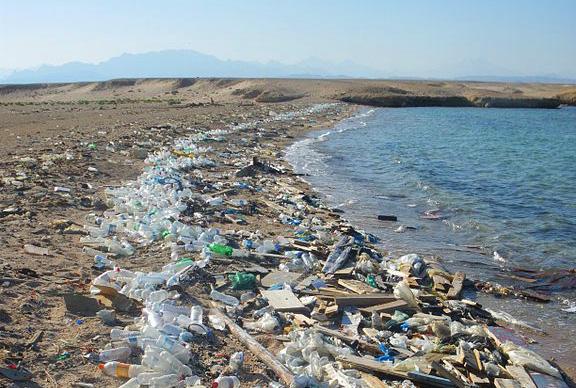Forget the floating Pacific garbage patch — new trash entering the oceans is much worse
Trash generated on land is flowing into the ocean at much higher rates than previous numbers suggest, according to a new study in the journal "Science."
There are anywhere from five to 13 million metric tons of plastic floating around the world's oceans — from 2010 alone. And that's not even the worst news coming out of a new environmental study.
That study, published in the journal "Science" in February, tried to find out how much ocean-going plastic is being created by humans on land.
Kara Lavender Law, a co-author of the study and a research professor of oceanography at the Sea Education Association in Woods Hole, Massachusetts, explains that her team wanted to measure “what’s coming out of the faucet rather than what's already in the bathtub” — the rate of plastic flowing into the oceans rather than the garbage that already exists.
In doing so, they found a huge and disturbing discrepancy: The study estimates there's anywhere from 20 to 2,000 times more material coming from land than what has been measured out in the ocean.
The scale of the problem is almost unimaginable. To get an idea, consider this: a new technique in Baltimore’s Inner Harbor uses a water wheel to scoop up trash and deposit it into dumpsters. It has collected 148 tons of trash since May 2014. The operators hope to have the harbor clean enough for swimming by the year 2020.
Law’s team looked at the 192 countries around the world that have a coastline and found the biggest contributors were countries that have growing economies. Waste generation rates are increasing very quickly in these developing countries, but they don't have the infrastructure in place to deal with the volume.
The other big contributors are countries like the United States, high-income countries with high waste-generation rates. “The amount of trash that you and I produce each day is much higher than in most countries around the world,” Law explains. So while developed countries can handle waste better, "if you think about the small percentage of waste that somehow escapes the garbage can or the garbage truck and enters the ocean, this actually translates to a large number."
The immediate solution is better waste management — building infrastructure in countries that don’t have effective ways to capture the waste. In places where infrastructure already exists, the goal is to reduce the overall amount of waste.
Law also notes her study looked only at waste generated on land — it didn't account for things like containers of Nikes that fall off ships, or material that flows into the ocean from natural disasters like hurricanes, floods or tsunamis. And while researchers suspect waste from land makes up the biggest share, Law says it's important to know where waste is coming from when designing solutions to the problem. That's why the next phase of their work will focus on identifying the sources of the plastic.
There's also another major problem that needs more investigation: Micro-plastics, which are typically a millimeter or two in size. Scientists know they are easily eaten by a wide variety of marine animals, ranging from invertebrate marine worms and barnacles up to sea birds, sea lions and even whales.
Yet Law says "we don't have a good sense of how small plastic breaks down in the ocean. If you talk to the polymer scientists, they'll tell you that it'll just turn into smaller and smaller pieces, down to nanoparticles, and it'll still remain a plastic polymer. But we don't have a good sense of how many of those nanoparticles are out there; we don't have a good way to measure them just yet.”
And the toxins associated with those plastics have big dangers of their own.
“We know that when plastics are manufactured, a variety of additives are included to give them certain properties: flexibility or flame retardant or color. And some of these additives are known toxins,” Law says. When they're drifting in the ocean, these particles act as little sponges, so they accumulate additional persistent toxins that have been in the ocean for decades — things like PCBs and DDT.
“We're concerned that when animals eat these little bits of plastic, those toxins might transfer into their tissues and potentially up the food web. In laboratory work this has been shown to occur,” Law says. “But right now we're not entirely clear on the risk in the actual ocean.”
This story is based on an interview that aired on PRI's Science Friday with Ira Flatow.
